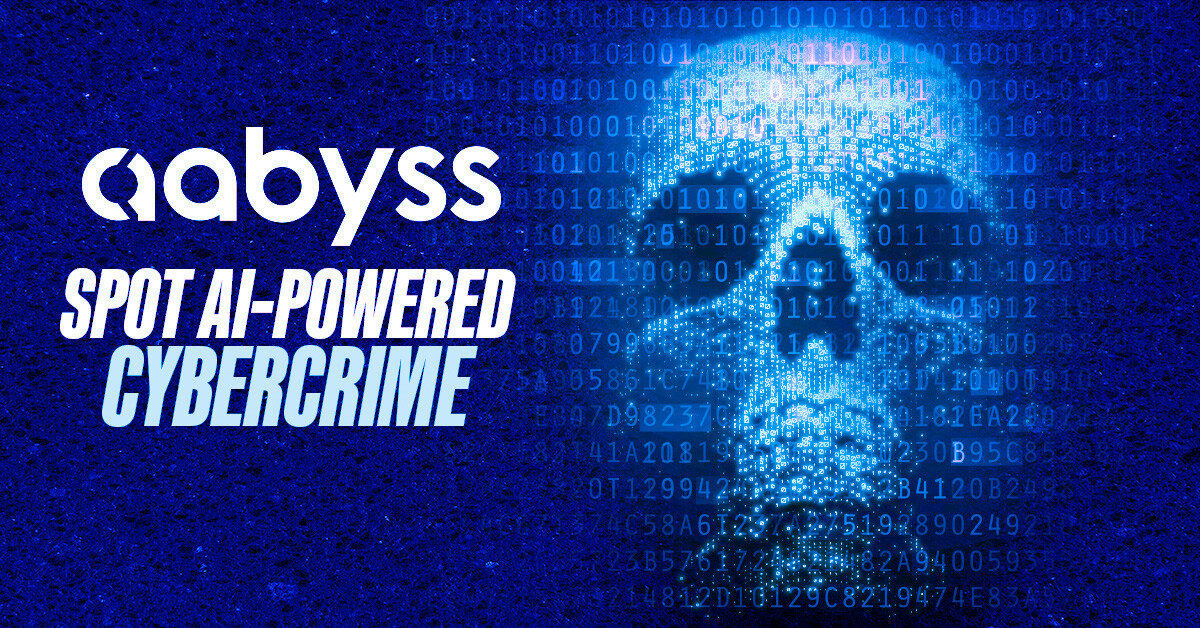Running a business is tough, especially when worrying about cyberattacks. Unfortunately, hackers are now using artificial intelligence (AI) to carry out advanced cyberattacks aimed at stealing data and disrupting business operations. The potential consequences of these attacks, from financial loss to reputational damage, are significant. The bright side is that there are measures you can implement to shield your business.
This article will explore how AI is utilised in cybercrime and provide tips on securing your business.
The Dark Side of AI: How Criminals Harness Technology for Malicious Intent
In today's digital age, advancements in artificial intelligence (AI) have revolutionised various industries, from healthcare to finance. However, with innovation comes a dark underbelly as criminals seek to exploit these technologies for nefarious purposes. In this blog, we delve into the unsettling reality of how criminals use AI to power their attacks across different domains.
Deepfakes: Weaponising Misinformation
Deepfake technology, which uses AI algorithms to manipulate and create realistic-looking videos and images, has become a potent tool in the hands of cybercriminals. These malicious actors can create convincing videos of individuals saying or doing things they never did, leading to misinformation, defamation, and extortion. For instance, they can create a video of your CEO announcing a significant product recall, causing panic among your customers and damaging your reputation. From political smear campaigns to impersonating high-profile figures, the potential for harm is immense.
Beyond the realm of propaganda and defamation, deepfakes pose a significant threat to cybersecurity. By impersonating executives or trusted individuals within organisations, attackers can deceive employees into divulging sensitive information or authorising fraudulent transactions. The era of "seeing is believing" is fading fast, replaced by a landscape where discerning reality from fiction becomes increasingly challenging.
Assistant Hacking: Exploiting Voice Recognition Systems
As virtual assistants like Siri, Alexa, and Google Assistant become ubiquitous in our daily lives, they also present new avenues for cybercriminals to exploit. Through sophisticated AI-driven attacks, hackers can hijack these voice recognition systems to perform unauthorised actions, access personal data, or even initiate financial transactions.
Imagine a scenario where a criminal uses AI-generated voice samples to impersonate users and gain access to their bank accounts or sensitive information. With the rise of voice-controlled smart devices, the potential attack surface expands exponentially, highlighting the urgent need for robust security measures to safeguard against such threats.
Supply Chain Attacks: Targeting Vulnerabilities in AI Systems
Supply chain attacks have long been a concern for cybersecurity professionals, but the integration of AI exacerbates this threat. By infiltrating AI algorithms or poisoning training data, adversaries can compromise the integrity and functionality of AI systems, leading to devastating consequences.
One alarming example is the manipulation of autonomous vehicles' AI systems through poisoned data sets, potentially causing accidents or chaos on the roads. Similarly, infiltrating AI-powered predictive maintenance systems in industrial settings could result in catastrophic failures, endangering lives and disrupting operations.
AI-Powered Password Cracking: Breaking Down Digital Fortresses
Passwords have long been the frontline defence in securing digital assets, but advancements in AI have rendered traditional password-cracking techniques obsolete. With the ability to analyse vast amounts of data and patterns at lightning speed, AI algorithms have become formidable adversaries in the quest for breaching digital fortresses.
Using techniques such as brute force attacks, dictionary attacks, and probabilistic reasoning, AI-powered password-cracking tools can efficiently crack passwords that would have previously taken weeks or months to decipher. These tools can analyse user behaviour, common password patterns, and even social media data to generate highly accurate password guesses.
Moreover, AI can adapt and learn from each attempt, refining its strategies and increasing its success rate over time. This continuous learning capability poses a significant challenge for cybersecurity professionals tasked with defending against such attacks.
To mitigate the risk of AI-powered password cracking, organisations must adopt robust password management practices, including the use of complex, randomly generated passwords and multi-factor authentication mechanisms. Additionally, implementing AI-driven anomaly detection systems can help identify and flag suspicious login attempts in real time, allowing for prompt intervention and remediation.
Ultimately, the arms race between cybercriminals wielding AI-powered password-cracking tools and defenders leveraging AI-driven security measures underscores the critical importance of staying vigilant and proactive in the ever-evolving landscape of cybersecurity. Only by embracing cutting-edge technologies and adopting a proactive security posture can organisations hope to withstand the relentless onslaught of AI-powered attacks.
The External Threat: AI Manipulation
With AI, cyber criminals can devote less time and effort in coordinating a large attack on an organization’s data system; instead, they can teach an AI system to carry out a cyber-attack with little to no human involvement.
Hackers can also break into AI data systems and manipulate an AI algorithm’s prioritization of information. By adjusting the algorithm to change what an AI system sees as valuable or not valuable data, a hacker can cause an AI system to damage or destroy your organization’s entire information system.
Conclusion: The Need for Vigilance and Collaboration
As criminals continue to innovate and adapt, the battle against AI-powered attacks requires a multi-faceted approach. Organisations must invest in robust cybersecurity measures, including AI-driven threat detection and response systems, to stay one step ahead of malicious actors.
Moreover, collaboration between industry stakeholders, government agencies, and AI researchers is not just beneficial but essential to developing standards, regulations, and best practices for mitigating the risks associated with AI technologies. By working together, we can harness AI's transformative potential while safeguarding against its darker implications in the hands of criminals. Your participation in this collective effort is crucial.
Protect Yourself Against AI-Powered Cybercrime
With the rise of AI-powered cybercrime, it's crucial to have a strong IT partner on your side.
Partner with us to leverage advanced technology and fortify your defences.
"Contact us today for a consultation to learn how our team can secure your business against evolving cyber risks."





Leave a Comment